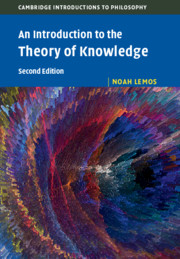Refine search
Actions for selected content:
36809 results in Cambridge Textbooks
Index
-
- Book:
- An Introduction to Japanese Society
- Published online:
- 10 December 2020
- Print publication:
- 12 November 2020, pp 369-396
-
- Chapter
- Export citation
Frontmatter
-
- Book:
- An Introduction to Japanese Society
- Published online:
- 10 December 2020
- Print publication:
- 12 November 2020, pp i-iv
-
- Chapter
- Export citation
Chapter 7 - Gender and family: challenges to ideology
-
- Book:
- An Introduction to Japanese Society
- Published online:
- 10 December 2020
- Print publication:
- 12 November 2020, pp 170-198
-
- Chapter
- Export citation
Chapter 4 - Generations and geography: variations in an aging society
-
- Book:
- An Introduction to Japanese Society
- Published online:
- 10 December 2020
- Print publication:
- 12 November 2020, pp 84-106
-
- Chapter
- Export citation
Chapter 3 - Class: stratification and disparity
-
- Book:
- An Introduction to Japanese Society
- Published online:
- 10 December 2020
- Print publication:
- 12 November 2020, pp 58-83
-
- Chapter
- Export citation
Chapter 11 - Culture: the popular and the cool
-
- Book:
- An Introduction to Japanese Society
- Published online:
- 10 December 2020
- Print publication:
- 12 November 2020, pp 283-314
-
- Chapter
- Export citation
Chapter 1 - Historical backdrop: disintegration and restoration
-
- Book:
- An Introduction to Japanese Society
- Published online:
- 10 December 2020
- Print publication:
- 12 November 2020, pp 1-24
-
- Chapter
- Export citation
Chapter 9 - The establishment: competition and collusion
-
- Book:
- An Introduction to Japanese Society
- Published online:
- 10 December 2020
- Print publication:
- 12 November 2020, pp 229-264
-
- Chapter
- Export citation
Acknowledgements
-
- Book:
- An Introduction to Japanese Society
- Published online:
- 10 December 2020
- Print publication:
- 12 November 2020, pp xviii-xviii
-
- Chapter
- Export citation
Chapter 8 - Ethnicity and Japaneseness: defining the nation
-
- Book:
- An Introduction to Japanese Society
- Published online:
- 10 December 2020
- Print publication:
- 12 November 2020, pp 199-228
-
- Chapter
- Export citation
Preface to the fifth edition
-
- Book:
- An Introduction to Japanese Society
- Published online:
- 10 December 2020
- Print publication:
- 12 November 2020, pp xvii-xvii
-
- Chapter
- Export citation
Chapter 6 - Education: diversity and unity
-
- Book:
- An Introduction to Japanese Society
- Published online:
- 10 December 2020
- Print publication:
- 12 November 2020, pp 136-169
-
- Chapter
- Export citation

An Introduction to the Theory of Knowledge
-
- Published online:
- 11 November 2020
- Print publication:
- 26 November 2020
-
- Textbook
- Export citation
maps
-
- Book:
- The Athenian Empire
- Published online:
- 19 October 2020
- Print publication:
- 05 November 2020, pp xxvi-xxviii
-
- Chapter
- Export citation
Appendix A - Weight Standards and Denominational Systems
-
- Book:
- The Athenian Empire
- Published online:
- 19 October 2020
- Print publication:
- 05 November 2020, pp 148-151
-
- Chapter
- Export citation
4 - Numismatic Narratives in the Pentekontaetia, 479–431 BC
-
- Book:
- The Athenian Empire
- Published online:
- 19 October 2020
- Print publication:
- 05 November 2020, pp 73-88
-
- Chapter
- Export citation
Part III - Neural Foundations
-
- Book:
- Learning and Memory
- Published online:
- 15 October 2020
- Print publication:
- 05 November 2020, pp 407-435
-
- Chapter
- Export citation
Preface
-
- Book:
- The Athenian Empire
- Published online:
- 19 October 2020
- Print publication:
- 05 November 2020, pp xxi-xxii
-
- Chapter
- Export citation
Maps
-
- Book:
- The Athenian Empire
- Published online:
- 19 October 2020
- Print publication:
- 05 November 2020, pp xix-xix
-
- Chapter
- Export citation
Contents
-
- Book:
- Learning and Memory
- Published online:
- 15 October 2020
- Print publication:
- 05 November 2020, pp vii-viii
-
- Chapter
- Export citation
